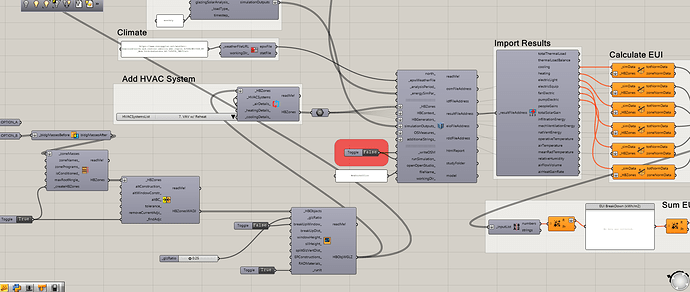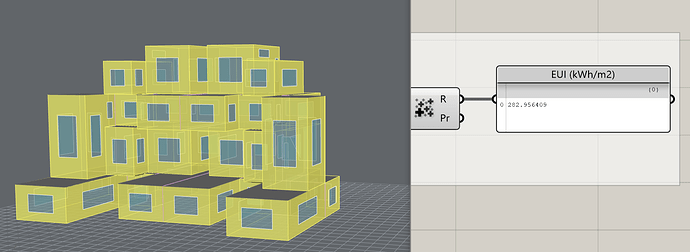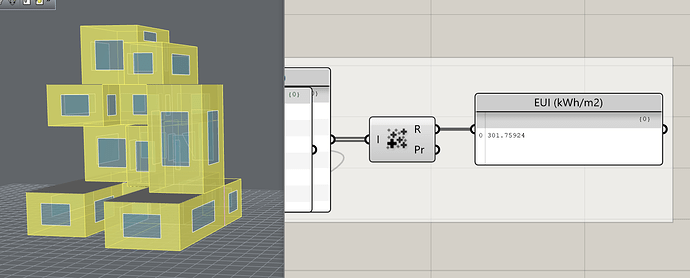The title states my issue and it is most likely b/c I misunderstand the way Energy Modeling works; however, I have ‘x’ number of HB zones , run the calculation through OpenStudio and get 200 EUI.
Next, I double the amount of HB zones, run the calculation through OpenStudio and get 180 EUI.
I am using defaults EP materials, but have also tried custom materials and zones. In this instance all
Simple_Test_Box_Energy_Simulation.gh (671.7 KB)
of the zones have the same program.
I’m sure this is an easy concept, but I am not understanding why this occurs.
Also, I understand this topic is slightly similar to: Small impact of splitting floor space and adding perimeter zones on EUI?
Thank you.
@ebroberg
This is pretty normal. As the EUI is the building energy per unit floor area, its change is relatively independent of the change in the size of your building. For example, it’s pretty common for larger residential houses to have a lower EUI then smaller ones, because the extra size is from lower-energy bedrooms, living space, while both will have similar high-energy loads from kitchens and bathrooms.
In your case, take a look at the change in the heating, cooling and solar gains, on zone by zone basis as well as the surface energy transfers to better understand what’s happening along your perimeter. You have a lot less surface area relative to volume in your larger model, which means you may be benefiting from less heat conduction loss during winter, less solar gain (during the summer), and/or beneficial self-shading that could explain the EUI reduction here.
S
Thanks @SaeranVasanthakumar
I have reached similar conclusions after discussing with a colleague and believe the issue is that adding more homogeneous zones increases internal gains.
This occurs because zones with the same temperature have less heat transfer.
I imagine changing the loads on zones will cause more dynamic results and viewing the solar and cooling gains on a zone by zone basis should shine light on this.
I am just baffled that such an increase in fixed glazing can be mitigated by these interior gains.
Thanks for your reply.
This occurs because zones with the same temperature have less heat transfer.
Yeap. And technically heat is a function of change in temperature (heat is the process in which energy is transferred, which results in changes to the thermal energy state), so zones with the same temperature have no heat transfer!
Although I am not quite sure what you mean by internal gains… I think you are on the right path. Checking out the load breakdown should clarify things.
S


